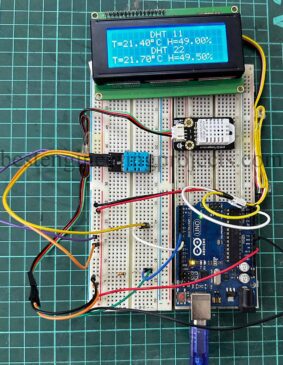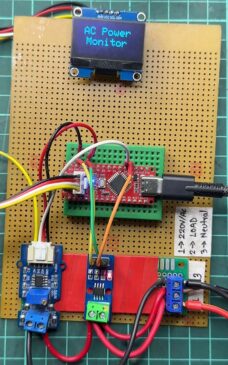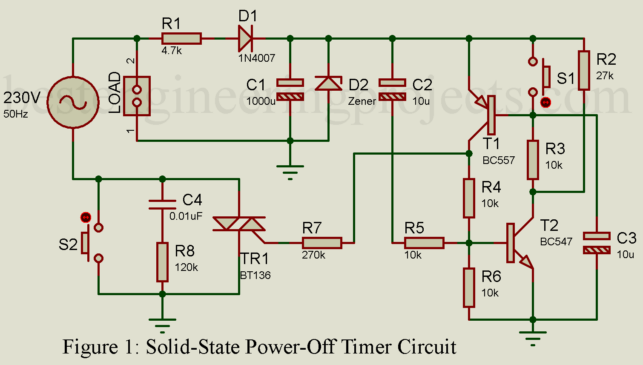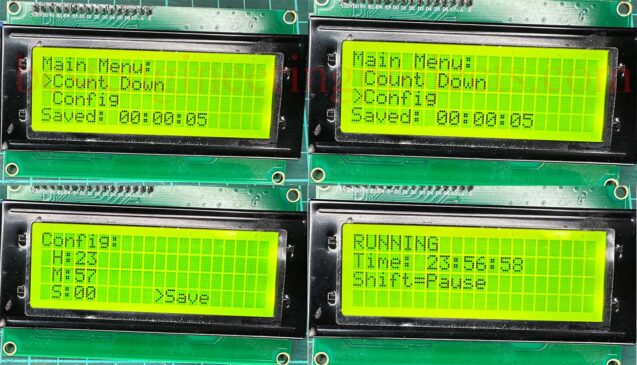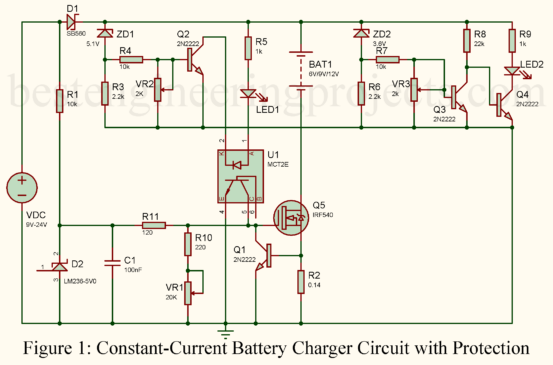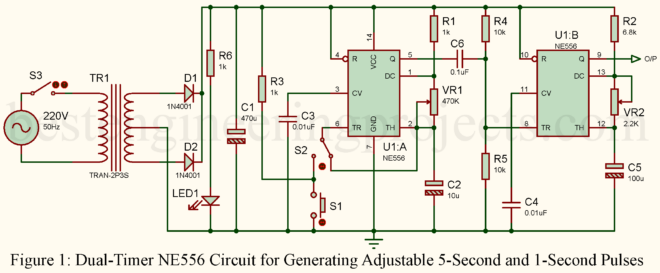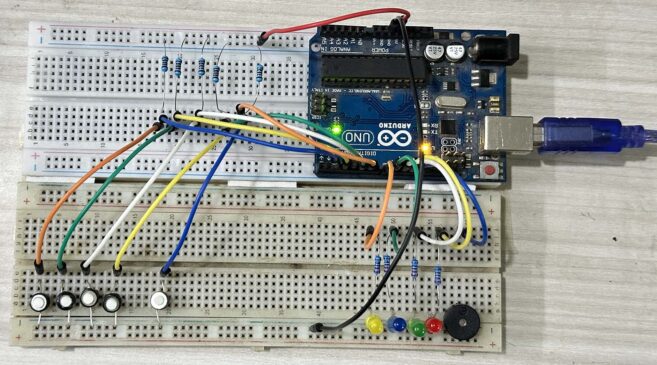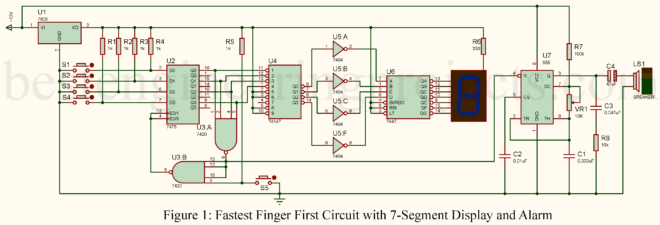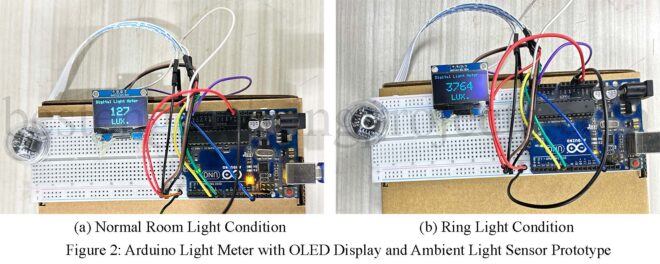Temperature and humidity monitoring is an essential aspect of IoT, smart agriculture, industrial automation, and home automation systems. DHT11 and DHT22 are two widely used low-cost temperature and humidity sensors that offer digital output and are easy to interface with microcontrollers like Arduino, ESP32, and Raspberry Pi. We’re gonna tear these sensors apart (not literally, please), see how they tick, and, most importantly, learn how to hook ’em up with Arduino for your next project. By the time you finish this guide, you’ll know: How these sensors actually work. The…
Read MoreHow to Build an AC Power Monitor Using Arduino and ACS712
Electricity is a mystery. We use it, we pay for it, but do we really understand how much each device is consuming? Ever felt like your electricity bill was higher than it should be, but you couldn’t pinpoint the culprit? Well, my friend, today we’re gonna unmask those energy-hogging appliances by building an AC Power Monitor using Arduino and ACS712! This little DIY project is like giving your home X-ray vision for power usage. You’ll be able to measure voltage, current, and power consumption in real time. And, as a…
Read MoreBuild a Solid-State Power-Off Timer Circuit with Zero Energy Loss
Ever left a device plugged in overnight, only to realize it’s been sipping power like a lazy vampire? We all have. Even when switched off, many devices still drink up energy, wasting precious electricity and silently adding to the bill. What if there was a smarter way? Well, guess what—there is! Today, we’re building a solid-state power-off timer circuit that not only cuts the load but consumes absolutely no energy when turned off. Why This Circuit is a Game-Changer You see, most circuits out there rely on relays or electromechanical…
Read MoreArduino Countdown Timer with Menu, EEPROM, and Buzzer Alerts
This project is perfect if you’ve ever wondered how to build a user-friendly countdown timer with an interactive menu, memory storage, and buzzer alerts. This step-by-step guide will walk you through creating an Arduino countdown timer using an I2C 20×4 LCD, push buttons, and a buzzer. The functions of this timer include setting and saving the countdown time, pausing and resetting, and even with buzzer notifications loudly when the time is up. This project is great for beginners, but it’s also feature-packed for advanced makers. In addition, it uses EEPROM to store your settings, so your countdown configuration will survive even when power is lost. Let’s get started! Why Build an Arduino Countdown Timer? Timers are an integral part of a wide variety of activities, from cooking and workout routines to the operations in industry. While there are many timers commercially available, building your own enables feature customization, serves as an introduction to learning about…
Read MoreHow to Build a Simple Beacon Flasher Circuit with LM317
Ever wondered how those tiny, flashing beacons work? They seem alive, don’t they? Pulsing, blinking, calling for attention—well, they’re not magic. Nope, they’re built using clever electronics. Today, I’ll show you how to make a simple Beacon Flasher Circuit using the LM317 voltage regulator. Trust me; this is a fun little project. Even if you’ve never touched a soldering iron before, you’re about to shine! Why Build a Beacon Flasher Circuit? Okay, enough about that before getting down to brass tacks; let’s talk about purpose. You’re camping in pitch-black night…
Read MoreConstant-Current Battery Charger Circuit with Protection
Ever wished your battery charger could do more than, well, charge? What if it could be smart enough to know when your battery’s full or even warn you when it’s about to run out of juice? That’s the magic of the Constant-Current Battery Charger Circuit with Protection. It’s like the caring friend who not only lends you a hand but also ensures you’re on the right track. Let’s explore this innovative circuit that charges your battery efficiently and keeps it safe from overcharging and deep discharge. Why Constant-Current Charging? Think…
Read MoreDual-Timer NE556 Circuit for Generating Adjustable 5-Second and 1-Second Pulses
There’s something undeniably magical about creating a circuit that pulses like a heartbeat, ticking away with precision. That’s what this Dual-Timer NE556 Circuit is all about—it’s a simple yet powerful design that spits out two different pulse durations, one after the other, like clockwork. If you love tinkering or need a timing solution, this little gadget is your new best friend. What Does It Do? Imagine standing in a room, flipping a light switch on and off every five seconds. Now, imagine that after every “off,” someone else presses another…
Read MoreArduino Fastest Finger First Game with LEDs and Reset Button
Have you ever had one of those moments where you’re competing with friends and wish there was a fun way to see who got the fastest reflexes? Here’s your answer: an Arduino-based Fastest Finger First game with LEDs! There are no complex displays, no 7-segment numbers to deal with—just good ol’ LEDs lighting up for the winner and a dedicated reset button to start fresh. If you’re a fan of simple yet engaging DIY projects, this one will light up your world—literally and figuratively. So, let’s dive in! What’s This…
Read MoreFastest Finger First Circuit with 7-Segment Display and Alarm
Imagine you’re on stage, heart pounding, eyes locked on the big screen in front of you. The host asks the final question—this is it. Your reflexes are sharp, your hand hovers over the buzzer, and then BAM! You slam that button down faster than a cheetah chasing its dinner. But how does the system know you were the first? That’s where the Fastest Finger First Circuit steps in. This little piece of engineering magic can make or break a game show, quiz night, or classroom competition. Today, we’re diving into…
Read MoreArduino Light Meter: Measure Ambient Light with OLED Display
Ever found yourself squinting at a bright day, thinking, “How much light is actually hitting my face?” Well, using an Arduino light meter that guesswork is gone. You’re practically giving your Arduino a pair of shades, but this one isn’t there to block the light-it’s there to measure it. Sounds cool, right? Let’s dive in. Why Build a Light Meter? Imagine having a gadget that tells you how bright your workspace is, or whether your plants are getting enough sunlight. That’s the power of this little project. Using an ambient…
Read More